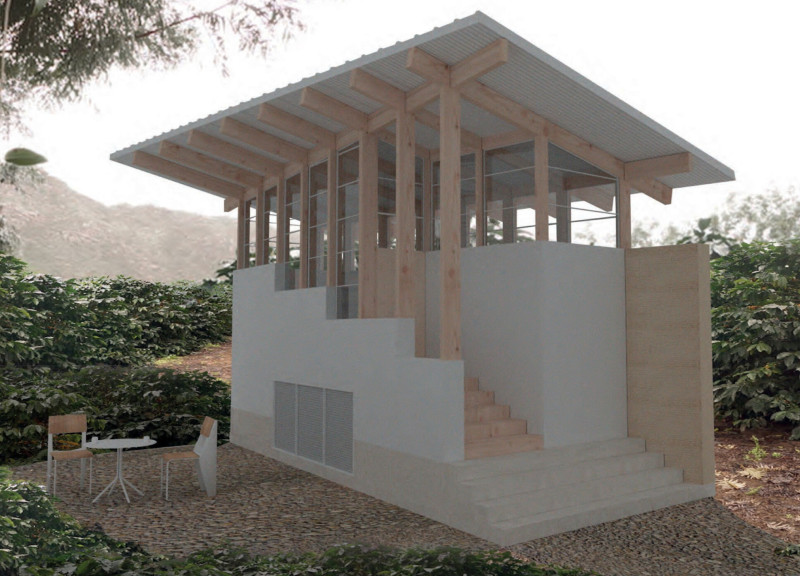5 key facts about this project
From the outset, the project conveys a clear intent through its spatial organization and material selection. The overall design incorporates various elements that create a harmonious balance between form and functionality. One of the most notable aspects is the effective use of natural light, facilitated through strategically placed windows and skylights. This consideration not only contributes to energy efficiency but also enhances the occupant experience, promoting well-being through exposure to daylight.
The layout of the structure is characterized by an open concept, where communal spaces flow seamlessly into private areas. This configuration promotes interaction among users while also allowing for moments of solitude when desired. The connectivity of spaces is emphasized through the use of transitional zones, such as corridors and alcoves, which serve to guide inhabitants through the building while providing opportunities for contemplation and informal gatherings.
Materiality is a defining feature of this project, wherein each selected material plays a crucial role in reinforcing both the architectural narrative and the environmental ethos of the design. The primary materials utilized include reclaimed wood, which adds warmth and character to the interior spaces, and sustainably sourced stone, which provides durability and a sense of permanence. The use of these materials not only bolsters the overall aesthetic but also aligns with contemporary sustainability practices, urging a conscious approach to construction that respects ecological boundaries.
The design effectively incorporates green technologies, such as rainwater harvesting systems and solar panels, reflecting a commitment to sustainability that resonates throughout the project. These elements work in synergy to minimize the building's carbon footprint while providing modern conveniences that enhance the quality of life for its users. The integration of green spaces into the architecture further elevates the design, promoting biodiversity and fostering a connection between the occupants and nature.
Unique design approaches manifest in the way the project interacts with its surroundings. The exterior is characterized by a blend of textures and finishes that establish a dialogue with the landscape, creating a visual continuity that respects the local architectural vernacular. Thoughtfully landscaped gardens surround the structure, enhancing not only the visual appeal but also the environmental resilience of the site. This intentionality in design reflects an awareness of the climatic conditions and the topography, demonstrating how architecture can adapt and respond to its locale.
Particular attention has been given to acoustics within the project, with sound-dampening materials integrated into walls and ceilings to create a serene environment. This is especially important in spaces designated for work and relaxation, serving to enhance concentration and comfort for users. The choice of color palettes, featuring earthy tones and subtle contrasts, is also significant, contributing to a calming atmosphere that resonates positively with its inhabitants.
The project stands as a testament to the principles of good architecture, weaving together elements of sustainability, functionality, and user-centered design. It represents more than just a physical structure; it is a well-considered space that fosters community, encourages interaction, and promotes a sustainable lifestyle.
For those interested in delving deeper into this architectural narrative, it is worthwhile to explore the architectural plans, sections, designs, and ideas that elucidate the thought processes and concepts behind its creation. Additional layers of understanding can be gleaned from examining these detailed presentations, which highlight the intricacies and intentions that underpin this exemplary architectural project.


























